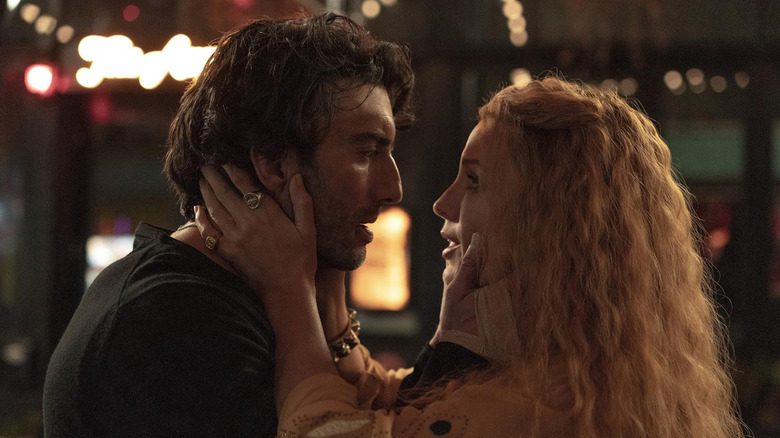Why Blink Twice Has A Trigger Warning (And Why It’s Caused Controversy)

August 23, 2024, marks the theatrical release of the feature directorial debut of Zoë Kravitz, “Blink Twice.” As I described in my review, it’s a genuine, jaw-dropping thrill ride and the biggest surprise film of the year. The core of “Blink Twice” has to do with memory and the complicated relationship we all have with one of the most important parts of our brains. Memory can be a thing of beauty, but it can also be a vault of torment. Flashbacks to our most traumatic moments exist alongside core memories that help shape us as human beings. But at the same time, memory does play favorites. Sometimes, our brains block out bad memories in an attempt to protect us, but sometimes our brains misremember events to the point of fabrication.
Memory is also intrinsically linked to sensory stimuli, commonly known as “triggers.” A whiff of a specific perfume or a song on the radio can instantly remind you of a happy memory associated with them, but not all sensory stimuli are positive. Triggers differ from person to person, and even people who have a shared trauma might not be triggered by the same thing. This is what complicates the push by some for trigger warnings to be presented ahead of movies. A person could theoretically be triggered by anything, and so it makes it difficult to determine what is or is not “worthy” of a trigger warning.
Recently, the Blake Lively film “It Ends With Us” has come under fire for not featuring a trigger warning ahead of the film, as the marketing presents the story as a romantic drama but hasn’t been as forthright about the film being a story about domestic violence. Ahead of its release, “Blink Twice” released a trigger warning on all of their social media accounts, some theaters are posting the notice physically on the doors of screenings, and others are even posting the notice as a title card on the screen before the trailers.
This decision has now become a controversy. No, I’m serious.
Is Blink Twice throwing shade at It Ends With Us?
The trigger warning shared by “Blink Twice” was first shared on August 22, 2024, ahead of the Thursday night preview screenings and the film’s wide release the following day. The statement reads the following:
“Trigger Warning. We are proud to finally share ‘Blink Twice’ with audiences in theaters worldwide this week. ‘Blink Twice’ is a psychological thriller about the abuse of power. While this is a fictionalized movie, it contains mature themes and depictions of violence — including sexual violence. This may be upsetting or triggering for some viewers. For resources that offer support, visit BlinkTwiceResources.com.”
Two days earlier, the Hollywood Reporter published a piece titled ‘It Ends With Us’ Should Have Warned Audiences Ahead of Time. When “Blink Twice” released its trigger warning, many viewed it as Amazon MGM Studios throwing subtle shade at Sony for not having done the same. The more likely outcome is that the studio saw the backlash lobbied against “It Ends With Us” and wisely chose to avoid the same fate while they still had time to do something about it.
Adding a trigger warning after the fact is pretty common on television which doesn’t have as many distribution complications to factor in as a movie being shown in different theaters across the world. There’s a chance “It Ends With Us” saw their mistake after the film’s release based on audience feedback but then it was too late. I’m not here to cape for the movie, but I’m also not going to assume bad faith about a situation none of us will ever fully understand.
Some people don’t think trigger warnings need to exist
Looking through the comment sections on the “Blink Twice” social posts or general conversations on Twitter/X, for as many people who are praising the studio’s decision to include a trigger warning, there are just as many people annoyed or downright angry about the decision. For one, there’s the impossible to answer question of “Where is the line?” because when absolutely anything could be a potential trigger, it does unintentionally imply a hierarchy when some subjects — like sexual violence — are deemed worthy of a trigger warning while other situations are not. I’m someone who lives with C-PTSD, which means my triggers aren’t always easily identifiable. I don’t and cannot expect a studio to warn me of every possible thing present in a movie, so I have to take an active role in doing my own research ahead of time.
Yes, that does mean I often know spoilers for films, but that’s the risk I take to keep my mental health intact. And therein lies another problem for a lot of people: they view trigger warnings as “spoilers.” The trailers for “Blink Twice” certainly don’t make reference to the sexual violence eventually shown on screen, but knowing there will be a scene depicting sexual violence is not a spoiler. The trigger warning does not indicate when the scene will appear, what the context is surrounding the scene, or how it fits into the larger scope of the film.
There’s an expression I’ve always liked that compares trigger warnings to lifeboats — if you don’t need them, it doesn’t hurt anyone to have them. But if you do need it, you’ll surely be glad it’s there. Given the unfortunate reality of how many people have experienced sexual violence, the call for trigger warnings has become more prevalent. Is it the responsibility of the studio to provide the content disclosure, or does the reasoning for an MPA rating need to be more prominently displayed? I don’t have an answer, but as our world evolves, this is certainly a topic the industry needs to tackle sooner rather than later.
Perhaps “Blink Twice” is the start of a standard in Hollywood.






